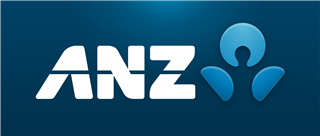News Release
For release: 11 June 2018
Boom in KiwiSaver first home withdrawals (+ video)
KiwiSaver is fast becoming an important part of the home buying mix with the number of ANZ KiwiSaver members making a first home withdrawal increasing almost five-fold over the past six years.
ANZ Wealth Managing Director Craig Mulholland said almost 10,000 members (9,876) made a first home withdrawal from their KiwiSaver accounts in the last financial year (year ended Sep 30th) – up from 2164 withdrawals in 2012.
“The overall number of our KiwiSaver members increased during that time but, even so, there has been a big increase in the number of people making a first home withdrawal.
“At the same time, the average amount of money withdrawn by our members for a first home is $20,000. That is double the average withdrawal in 2012.”
For the first eight months of this financial year there were 7320 withdrawals, averaging $22,339.
Mr Mulholland said that as balances increased, KiwiSaver was playing an even more significant role in helping people buy their first home. Just over 40% of New Zealand first home buyers used their KiwiSaver money to help with their purchase last year.
“We expect withdrawals to increase in size as KiwiSaver balances increase,” said Mr Mulholland.
“A young person who starts contributing regularly to KiwiSaver from the time they start their first job is likely to have built up a tidy sum by the time they reach the typical home buying age of 35.
“They will have had the benefit of a decade of contributions from themselves and their employers, as well as investment returns.”
For example, a 25-year-old earning $50,000 a year and contributing 3% to their KiwiSaver account, matched by their employer, could have up to $40,000 to put towards their first home at age 35.
Mr Mulholland said that while KiwiSaver was a good help to first home buyers, it was important that members continued making contributions to KiwiSaver after a first home withdrawal.
“Withdrawing money for a first home can put a big dent in the amount you will have when you retire. So it is important that you resume contributions as soon as possible and consider increasing your contribution rate to ensure you catch up and achieve your retirement savings goal.
“This will ensure that saving for a comfortable retirement and owning your own home work hand in hand.”



 NIWA: Students Representing New Zealand At The ‘Olympics Of Science Fairs’ Forging Pathway For International Recognition
NIWA: Students Representing New Zealand At The ‘Olympics Of Science Fairs’ Forging Pathway For International Recognition Coalition to End Big Dairy: Activists Protest NZ National Dairy Industry Awards Again
Coalition to End Big Dairy: Activists Protest NZ National Dairy Industry Awards Again Infoblox: Dancing With Scammers - The Telegram Tango Investigation
Infoblox: Dancing With Scammers - The Telegram Tango Investigation Consumer NZ: This Mother’s Day, Give The Gift Of Scam Protection And Digital Confidence
Consumer NZ: This Mother’s Day, Give The Gift Of Scam Protection And Digital Confidence NZ Airports Association: Airlines And Airports Back Visa Simplification
NZ Airports Association: Airlines And Airports Back Visa Simplification Netsafe: Statement From Netsafe About Proposed Social Media Ban
Netsafe: Statement From Netsafe About Proposed Social Media Ban